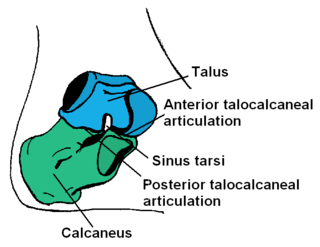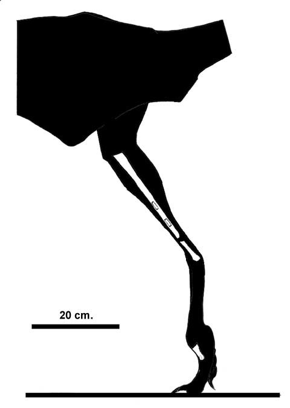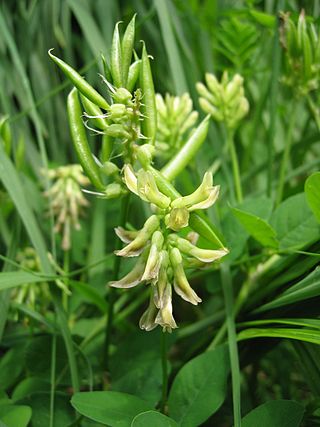Locoweed is a common name in North America for any plant that produces swainsonine, an alkaloid harmful to livestock. Worldwide, swainsonine is produced by a small number of species, most of them in three genera of the flowering plant family Fabaceae: Oxytropis and Astragalus in North America, and Swainsona in Australia. The term locoweed usually refers only to the North American species of Oxytropis and Astragalus, but this article includes the other species as well. Some references may incorrectly list Datura as locoweed.

Astragalus is a large genus of over 3,000 species of herbs and small shrubs, belonging to the legume family Fabaceae and the subfamily Faboideae. It is the largest genus of plants in terms of described species. The genus is native to temperate regions of the Northern Hemisphere. Common names include milkvetch, locoweed and goat's-thorn. Some pale-flowered vetches are similar in appearance, but they are more vine-like than Astragalus.

The talus, talus bone, astragalus, or ankle bone is one of the group of foot bones known as the tarsus. The tarsus forms the lower part of the ankle joint. It transmits the entire weight of the body from the lower legs to the foot.

Kakuru is a dubious genus of theropod dinosaur from the early Cretaceous Period.

Astragalus glycyphyllos is a flowering plant in the family Fabaceae, native to Europe. It is a perennial herbaceous plant which is sometimes used for tea.

Astragalus mongholicus, synonyms including Astragalus propinquus and Astragalus membranaceus, commonly known as Mongolian milkvetch in English; 'Хунчир' in Mongolian; huáng qí, běi qí or huáng huā huáng qí, in Mongolia, is a flowering plant in the family Fabaceae. It is one of the 50 fundamental herbs used in traditional Mongolian medicine. It is a perennial plant and it is not listed as being threatened.

A crurotarsal joint is one that’s situated between the bones of crus, i.e. shin and the proximal tarsal bones, i.e. astragalus and calcaneum.

Astragalus canadensis is a common and widespread member of the milkvetch genus in the legume family, known commonly as Canadian milkvetch. The plant is found throughout Canada and the United States in many habitats including wetlands, woodlands, and prairies.

Astragalus lentiginosus Astragalus lentiginosus is a species of legume native to western North America where it grows in a range of habitats. Common names include spotted locoweed and freckled milkvetch. There are a great number of wild varieties. The flower and the fruit of an individual plant are generally needed to identify the specific variety.

Gaspar Rubio Meliá was a Spanish football forward and coach.

Calycosin is an O-methylated isoflavone. It can be isolated from Astragalus membranaceus Bge. var. mongholicus and Trifolium pratense L..

Kumatakenin is an O-methylated flavonol. It can be found in Astragalus membranaceus.
Jaklapallisaurus is a genus of unaysaurid sauropodomorph dinosaur. It lived during the Late Triassic period in what is now Telangana, central India.The genus is monotypic, only including the species Jaklapallisaurus asymmetricus.

Fosterovenator is a genus of ceratosaur dinosaur known from the Late Jurassic Morrison Formation of Wyoming. The holotype is YPM VP 058267A, B, and C, a tibia with an articulated astragalus. An additional specimen is known, the paratype YPM VP 058267D, a fibula of a larger individual.
Lepidus is a genus of extinct theropod from the Upper Triassic of the United States. It lived in the Otis Chalk localities of the Dockum Group in Texas, around 223 million years ago.
Parsigecko is a monotypic genus of lizards in the family Gekkonidae. It contains one species, Parsigecko ziaiei, known as Ziaie's Pars-gecko. It is found in southern Iran.

Unaysauridae is a clade of basal sauropodomorphs from the Late Triassic of India and Brazil.

Astragalus crassicarpus, known as ground plum or buffalo plum, is a perennial species of flowering plant in the legume family, Fabaceae, native to North America. It was described in 1813. The fruit is edible and was used by Native Americans as food and horse medicine. It is a host of afranius duskywing larvae. It is also known as groundplum milkvetch and pomme de prairie.













